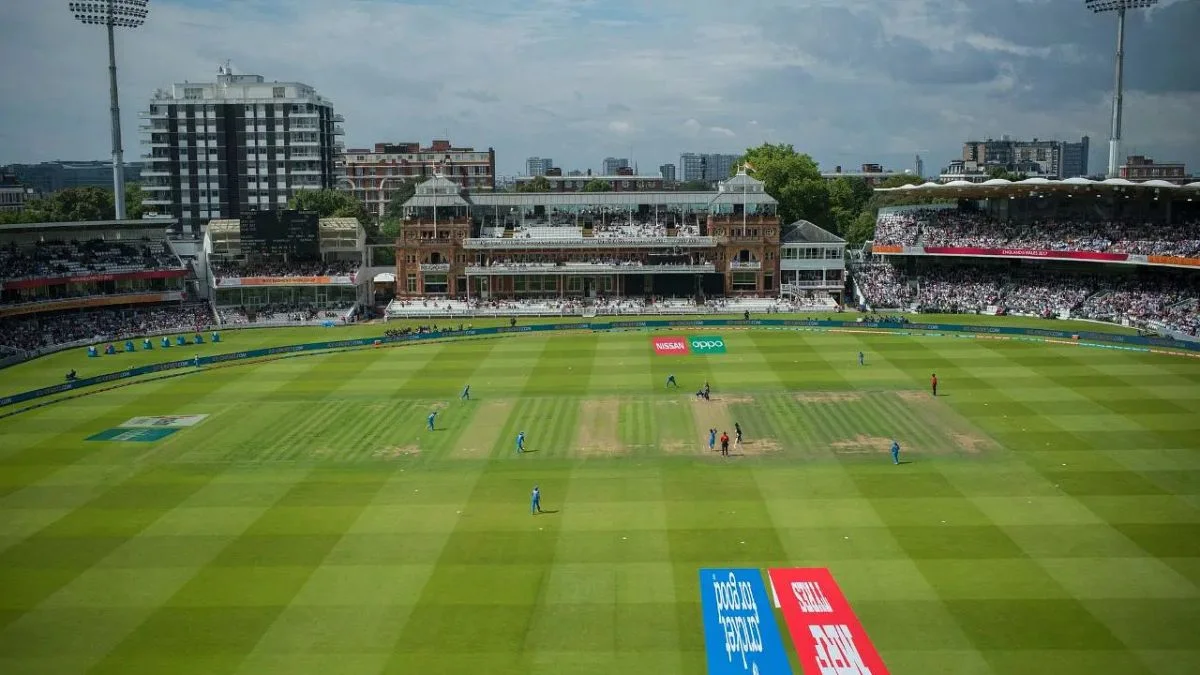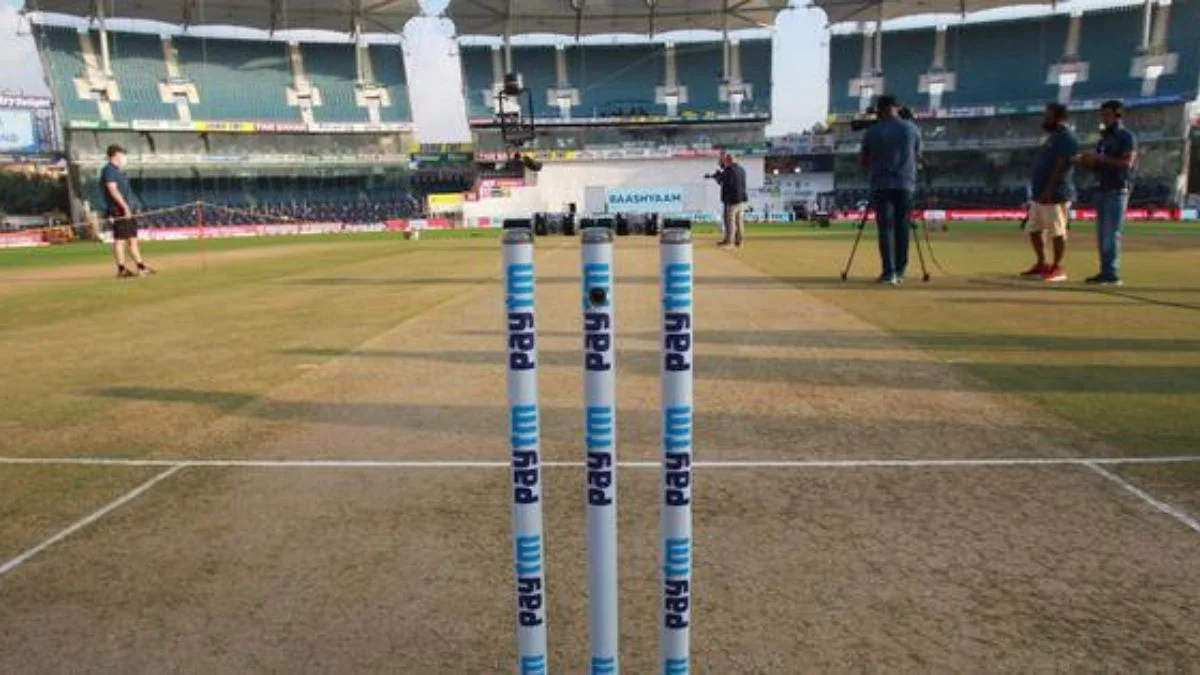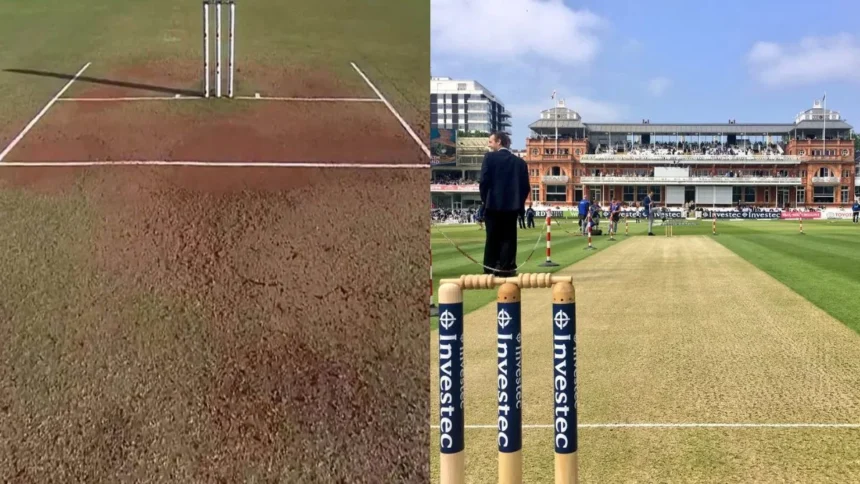English Soil vs Indian Soil: The very physical conditions of the pitch in the game of cricket are, arguably, the most determinant variable when it comes to team planning, individual performance, and eventual outcomes in cricket matches. We compare the 2 opposite ends of playing surface conditions, which are English soil and Indian soil, especially in the difficulties that they pose for batsmen and bowlers alike.
English Soil: Swing and Seam-Friendly Conditions

Grass and moisture
The English pitches, and especially the legendary grounds like Lord’s, are well-known for their lush green grass and moisture. Thus, English soil is great for pacers and especially seamers, during the first phase of a Test match.
Swing and Seam Movement

The damp English weather and cloudy skies enable the ball to move prodigiously. Seamers are helped by both side seam action and air movement, and batsmen find it hard to calculate the line and length. The slightest edge yields catches behind the wicket or in the slips.
Bounce and Deterioration
Although there is some rebound, it is normally not steep. The ball must be pitched in good length regions by the bowlers to take advantage of the turn. Over time, English pitches become flat, and batting becomes simpler in the latter part of the innings.
Weather Influence on Performance
Cool temperature, common cloudiness, and gusty winds all add to vast movement off the ground and through the air. These conditions serve to make normal swing and seam bowling even more effective, rendering English soil particularly inhospitable for batsmen, particularly tourists.
Indian Soil: A Spinner’s Dream

Dry Surface and Cracked Pitch
In stark contrast, Indian pitches are typically dry, dusty, and filled with surface cracks. The hot and arid climate of the subcontinent leads to rapid pitch deterioration, favoring spin bowlers from day three onward.
Spin and Reverse Swing Dominance
The absence of grass and low humidity causes negligible seam or swing. Instead, Indian soil allows for high spin possibilities right from the beginning and promotes reverse swing early because of the abrasive nature of the surface. Foreign teams frequently find it difficult to deliver quality spin on Indian surfaces.
Low Bounce and Pitch Breakdown
The Indian pitches tend to have low and uneven bounce, and cracks increase with the passage of time, making stroke play even more challenging. This eliminates the possibility of edges getting to the slips and restricts pace bowling to some extent.
When it comes to player endurance, climatic conditions in India can have a major impact because of all the extreme temperatures and humidity. The dew factor can also be important for performing teams playing day-night matches because it tends to influence how teams plan, especially regarding batting and bowling.
Comparison of Pitch Characteristics
| Characteristic | English Soil (Generally) | Indian Soil (Generally) |
| Grass Cover | Lush and green | Dry with little grass |
| Moisture Level | High (due to climate) | Low (due to hotter climate) |
| Hardness | Variable (can be soft early, then firm) | Hard (baked by the sun) |
| Bounce | Moderate to good (can be variable) | Low and sometimes inconsistent |
| Seam Movement | High (especially with a new ball) | Low |
| Conventional Swing | High (with new ball, humid conditions) | Low (less atmospheric moisture) |
| Spin | Low (at the start), greater later as the pitch dries | High from early phases (due to dryness, cracks) |
| Reverse Swing | Moderate (often late in the season/innings) | High (early onset, aided by abrasive surface) |
| Pitch Deterioration | Flattens, but can offer assistance later as the grass wears off | Deteriorates, widens cracks, and becomes dusty |
Weather and Bowling Impact Comparison
| Factor | English Conditions (Generally) | Indian Conditions (Generally) |
| Temperature | Cool (mild summers) | Hot (especially during summer months) |
| Humidity | High (variable, often present) | High (especially coastal areas, monsoon) |
| Cloud Cover | Frequent (overcast days are common) | Rare (mostly clear skies) |
| Wind | Strong and directional (can aid/hinder swing) | Moderate (less impactful on the ball) |
| Daylight Hours | Long (especially in summer, due to higher latitude) | Standard (closer to the equator) |
| Rain Frequency | Frequent and light showers | Rare but often heavy (monsoon) |
| Swing Potential | High (aided by atmospheric conditions) | Low (less atmospheric moisture/turbulence) |
| Seam Movement | High (aided by moisture and grass on the pitch) | Low (drier, harder pitches) |
| Spin Influence | Moderate (late in the match as the pitch dries) | High throughout (dry, abrasive pitches) |
| Ball Wear Rate | Slower (due to softer pitches, less dust) | Faster (due to abrasive pitches, dust) |
| Player Endurance | Moderate (temperatures are less taxing) | Low due to heat (risk of dehydration, fatigue) |
| Dew Factor | Minimal (less common, less impactful) | Significant in D/N games (can make the ball wet) |
Adapting to the Soil is Key
In summary, Indian soil and English soil require radically different approaches in cricket. While England is the seamers’ and swing bowlers’ paradise, Indian pitches favor spin and reverse swing because of their abrasive, cracked surfaces. Teams have to modify their batting and bowling strategies according to the soil conditions, which tend to be the reason for winning and losing.
Familiarity with the science of pitch behavior and weather influence is essential for players and analysts alike in the contemporary game. Whether winning through swing on England’s green tops or neutralizing spin on India’s turning grounds, flexibility is the trademark of top cricketing teams.
ALSO READ: ‘Can’t Wait To Be Back’- Suryakumar Yadav, India T20I Schedule





























